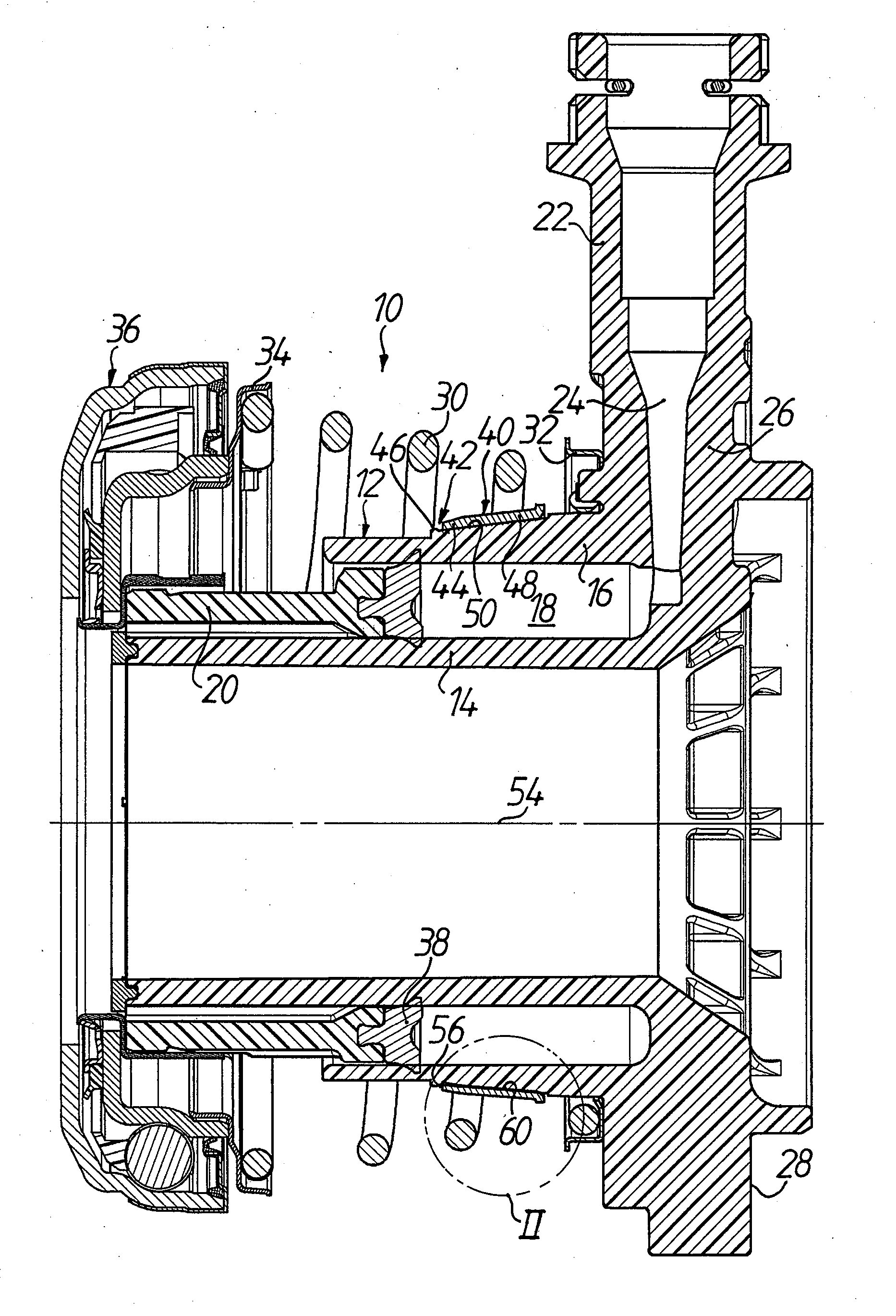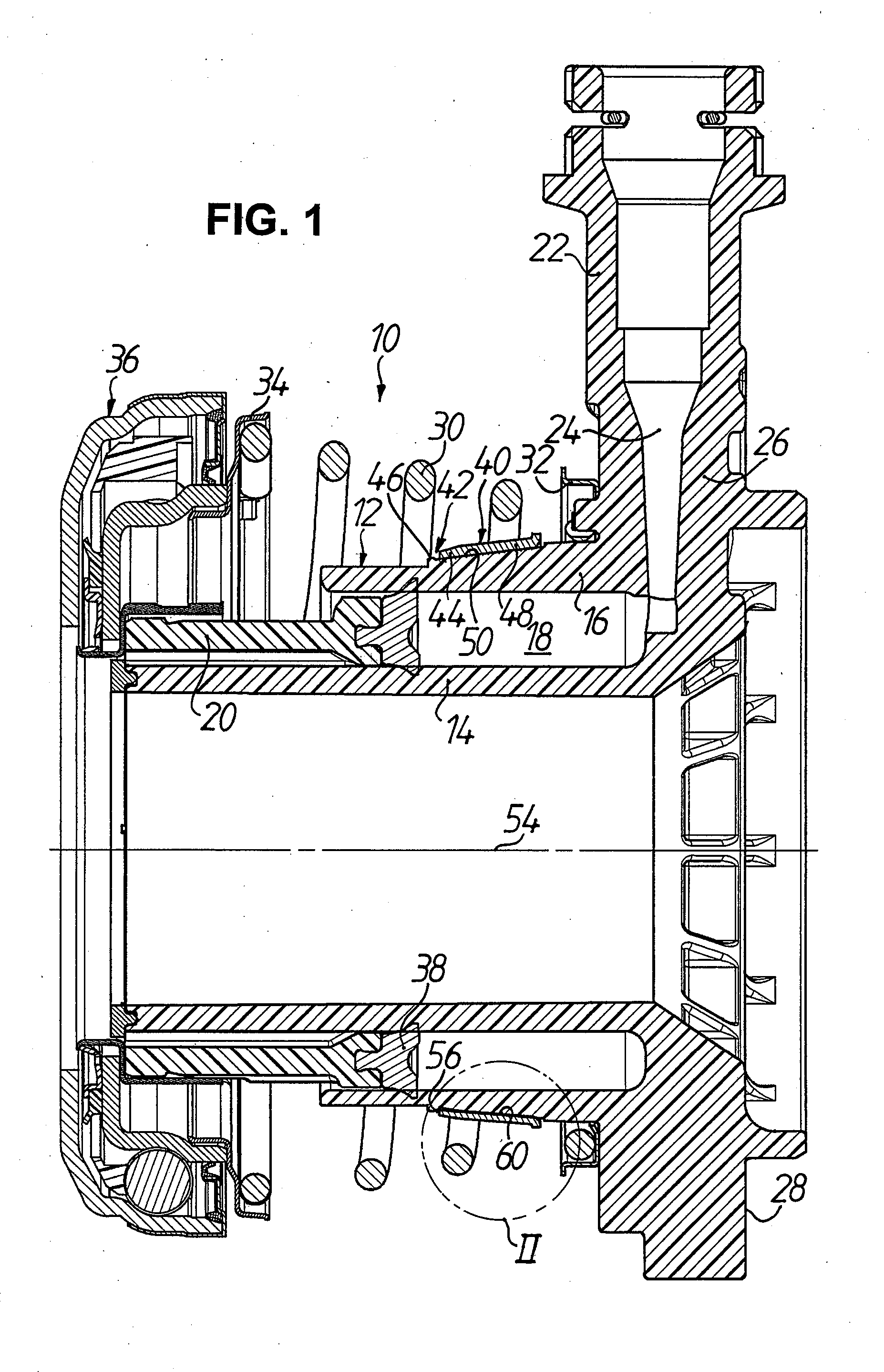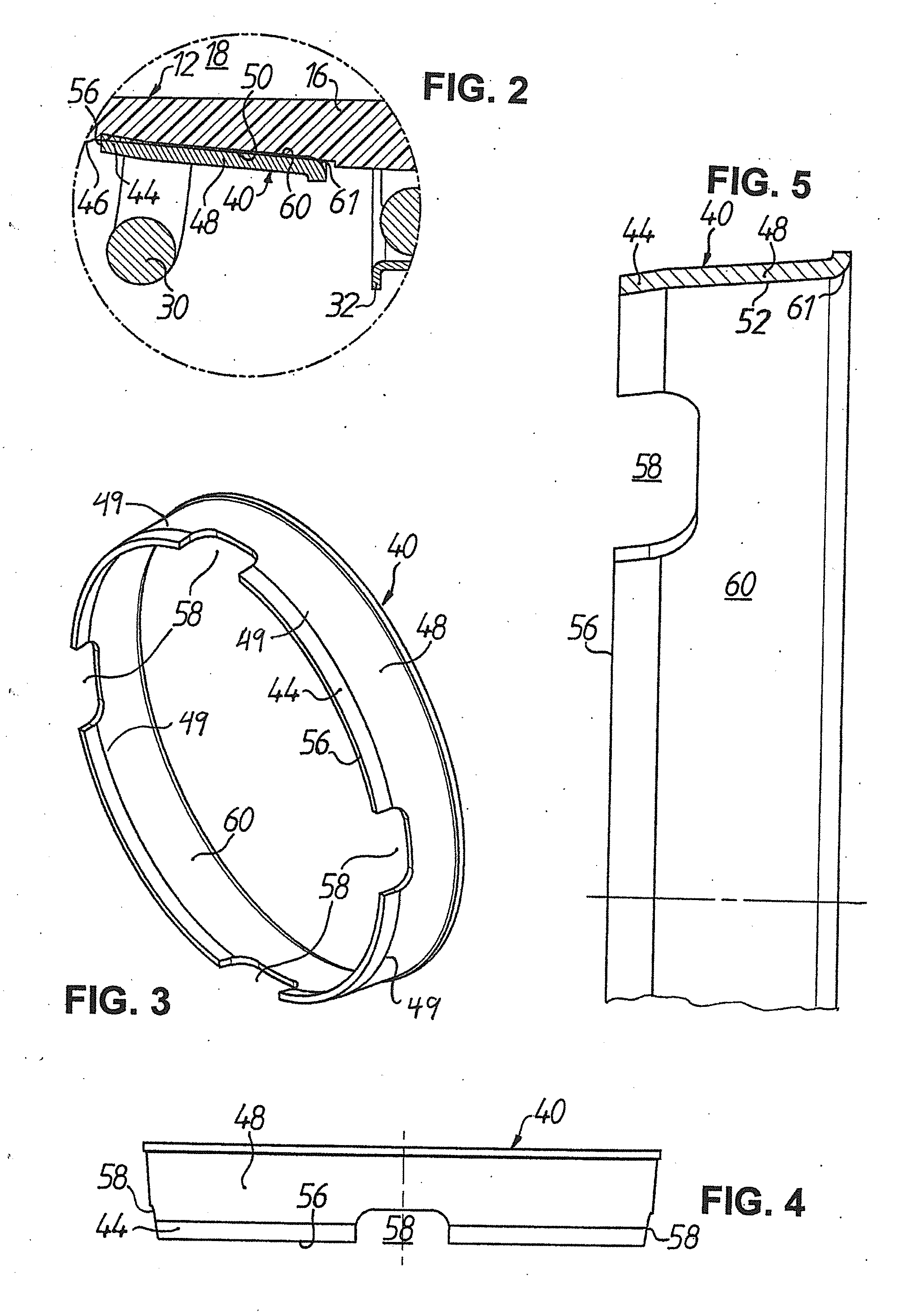Concentric slave cylinder for a hydraulic clutch actuator
a technology of hydraulic clutch actuator and slave cylinder, which is applied in the direction of reciprocating piston engines, mechanical equipment, engines without rotary main shafts, etc., can solve the problems of comparatively long dwell time, unsuitable reinforcement, and complicated injection molding process,
- Summary
- Abstract
- Description
- Claims
- Application Information
AI Technical Summary
Benefits of technology
Problems solved by technology
Method used
Image
Examples
Embodiment Construction
[0024]A concentric slave cylinder 10 for hydraulic clutch actuating means for dry friction clutches is illustrated in FIG. 1 in basic setting in non-mounted state. The concentric slave cylinder 10 has a cylinder housing 12, which is injection-molded from plastics material, for example from GF-filled polyphtalamide, with two concentrically arranged cylinder walls, namely an inner cylinder wall 14 and an outer cylinder wall 16, which bound an annular pressure chamber 18. An annular piston 10 operatively connectible with the clutch (not illustrated) is received in the pressure chamber 18 to be displaceable and can be selectively acted on by a pressure medium via a pressure connecting stub pipe 22 of the cylinder housing 12 in order to release the dry friction clutch by displacement of the annular piston 12. The pressure connecting stub pipe 22 is for this purpose connected with the pressure chamber 18 by way of a channel 14 formed in the cylinder housing 12 so that the pressure medium,...
PUM
 Login to View More
Login to View More Abstract
Description
Claims
Application Information
 Login to View More
Login to View More - R&D
- Intellectual Property
- Life Sciences
- Materials
- Tech Scout
- Unparalleled Data Quality
- Higher Quality Content
- 60% Fewer Hallucinations
Browse by: Latest US Patents, China's latest patents, Technical Efficacy Thesaurus, Application Domain, Technology Topic, Popular Technical Reports.
© 2025 PatSnap. All rights reserved.Legal|Privacy policy|Modern Slavery Act Transparency Statement|Sitemap|About US| Contact US: help@patsnap.com



